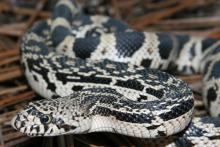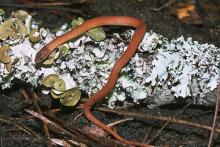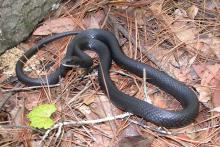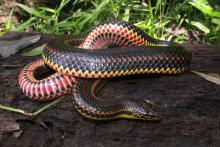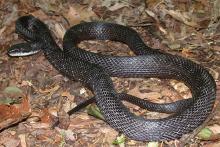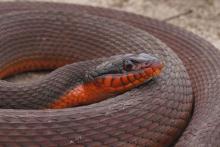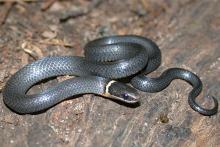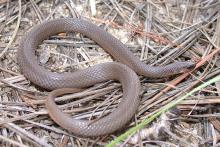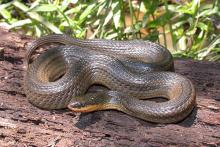
Glossy Crayfish Snake
Scientific Name: Regina rigida
Photo Credits: JD Wilson
Found in swampy areas, the Glossy Crayfish Snake has two faint dark stripes running down its olive-brown body. The non-venomous watersnake eats primarily crayfish with teeth that can hold onto the hard shells. They are most active at night.



